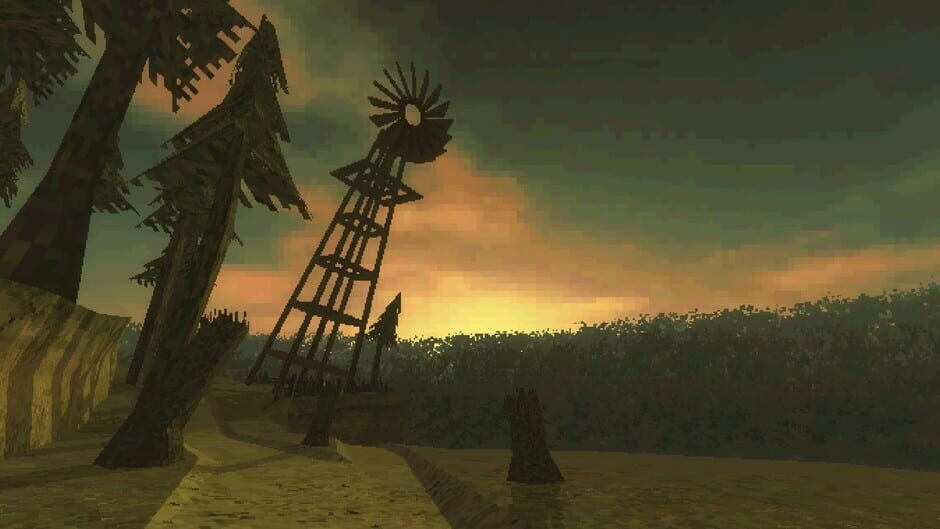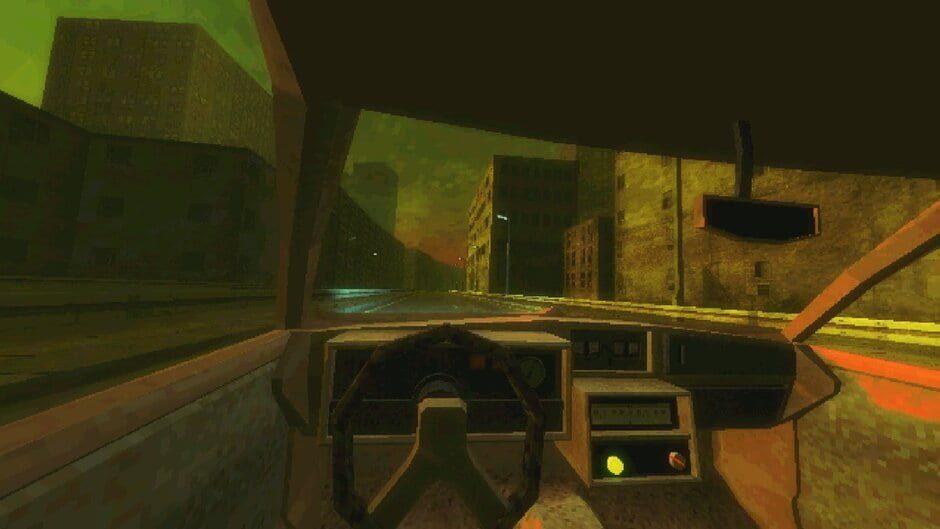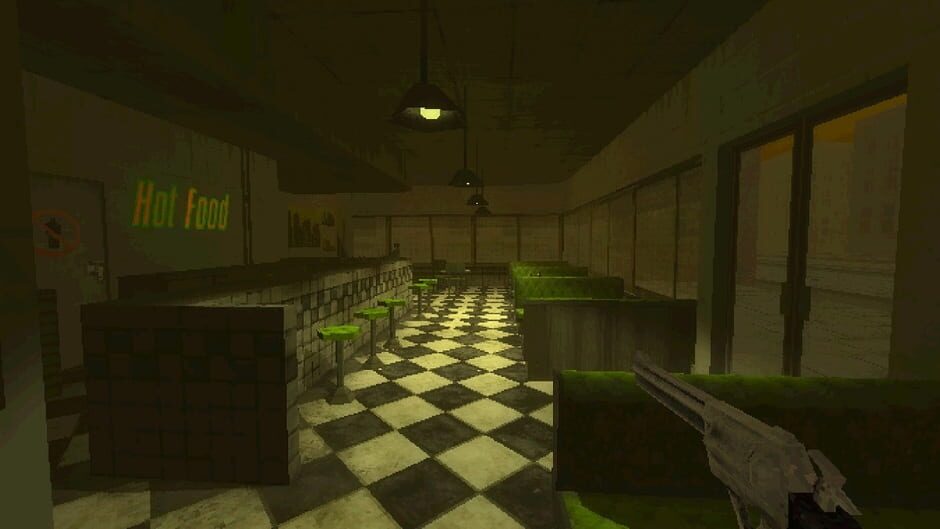It’s a testament to Paratopic’s consistently unsettling approach to storytelling and presentation that its atmosphere continues to cast a shadow as I reflect on my time with it. This is a first-person story-driven psychological horror with a dark ambient soundtrack, and PS1-inspired low-poly presentation. You play the role of three separate characters whose foreboding stories overlap and interact both narratively and thematically. Its primary success, however, is in how the developers at Arbitrary Metric distort the familiar to both intrigue and disquiet the player.
It’s a short game. One play through lasts only forty-five minutes, but it has stayed with me for much longer and I’m still trying to unravel some of its mysteries. It also encourages replayability with a shifting narrative structure, curious dialogue choices, and an achievement system. I’ve played Paratopic three times now and while I still don’t feel like I have all of the details in place, I’m satisfied that not every last thread is neatly tied, and that this is very much in the spirit of the game.

I’ll avoid concrete description of the events of the narrative, not only because much of the enjoyment is in piecing together these disparate vignettes but also because in isolation they don’t seem to amount to much. You talk to a gas station attendant. You give a neighbour a videotape. You photograph some birds. I assure you that there are no spoilers here, but these scenes still colour my mood as I recall them.
Paratopic relishes the use of liminal spaces to create a discomforting in-between reality, clouded by a malevolent unknown. It’s difficult to put your finger on this disorienting otherness but it’s a mood conjured by empty subway stations, silent hotel corridors and libraries after-hours. Each of the settings in the game seems perfectly mundane and earthly, from chatting in an apartment building to taking photos on a woodland hiking trail and sitting in a booth at a diner, but these everyday scenes are gradually denatured to build the sense that something is not right.
In part, this is achieved through the introduction of subtly incongruous elements such as a storage container in the woods, cardboard boxes seemingly full of flesh or an unerringly still figure standing on the gas station forecourt; elsewhere, it is with the distortion of the familiar. What exactly is on those sinister videotapes? How should we identify the creature flying through the forest? As the narrative cuts sharply from one scene to another, layering symbolic imagery, the cumulative effect is one of suspicion and insecurity, and a creeping dread which makes us question what we are seeing.

The late 90s 3D aesthetic works well for this setting, not only because it harks back to some of the most influential horror games ever made but because the low-resolution textures offer just enough detail for your imagination to fill in the blanks. The occasional use of fixed camera angles places you uncomfortably close to texture-wrapped faces which distort across the angular polygonal models. This deliberate anachronistic limitation makes conversations and interactions jarring and disconcerting.
The superb sound design and warped vocalisations only reinforce the sense that there is something off about everyone you meet in the game. Through pitch shifting, band filters and distortion effects, voices are modulated to the point of being just beyond comprehension. At times, you read the subtitles and catch familiar snippets of the original line reading, or at least you think you do, and the NPC is momentarily humanised before they slip back into abstract gibberish. This constant audiovisual push-and-pull gave me the queasy feeling of being alone in company. I did not want to spend time with these people.
As a fan of dark ambient and dub techno, the soundtrack is almost too appealing to disturb me in the same way, but it certainly thickens the atmosphere. It’s part John Carpenter, part GAS and I think it’s bloody brilliant. Composer Lazzie Brown creates a fog of synths, scratchy textures and droning bass tones that envelop the player; and it once again straddles that line of comfort and confusion, sliding in and out of discordance. I’ve listened to it a dozen times over the past few days and I find new details each time buried in its dark corners.

Birdwatcher’s Theme is a particularly beautiful but ominous piece, calling to mind some of the more sombre Pop Ambient releases on the Kompakt label. It might be apologist for me to claim that the game’s driving sections are deliberately uneventful to build suspense but I very much enjoyed listening to the garbled radio chatter and fuzzy synth renditions of Bach’s Air on a G String and others, as the outside world grew darker. Even if the game lies outside your preferred genre, I would recommend it for the soundtrack alone.
Paratopic is an experimental, confident title which requires a little investment from the player to uncover its morbid secrets. On a subsequent play through, while you may make slightly different dialogue choices that will unlock certain achievements and reveal contextual details, you do relive the same narrative beats and direction. However, if you allow yourself to sink into its otherly atmosphere and reform its fragmented tales, you will find an intriguing and haunting experience which lurks in the memory.

